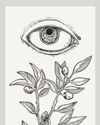
Chances are you're too young to remember Carly Simon's tune 'No Secrets' from her 1972 album No Secrets, in which she sings to her lover "We have no secrets, we tell each other everything." However, telling everything - all those past lovers, all those hidden fantasies - may not be the best recipe for a healthy relationship. The song's refrain ends, "Sometimes I wish... that I never knew, some of those secrets of yours." Perhaps we are in danger of discarding this wisdom, in a society where everything that is hidden is looked upon with suspicion, and transparency is hyped as a great virtue.
We are frequently assaulted by calls for transparency. A quick Google search on the need for transparency' delivers lists of reasons why more transparency is needed, especially in business, politics, and education. I am sure many readers recognise the boss calling for a process of transparency'. Yet philosophical inquiry will reveal that transparency intrudes upon privacy, kills spontaneity, and robs the individual of interiority. In the Age of Transparency, interiority, secrecy, and Hermetic hiddenness are forms of resistance.
Hypervisibility
Calls for 'transparency' betray an optical preference - a hidden assumption that the only knowledge that is worthwhile is knowledge for which the evidence can be seen. This can be summed up in the expression 'Seeing is believing'. Other ways of knowing become secondary. Walter Benjamin further pointed out that the Scientific Revolution of Copernicus and Galileo set us on a course leading to an "optical connection to the universe" (One Way Street and Other Writings, 1979, p.111). And we talk about 'eye-witnesses', even when the witnesses relate testimony that was only ever heard, never seen.
Denne historien er fra October/November 2023-utgaven av Philosophy Now.
Start din 7-dagers gratis prøveperiode på Magzter GOLD for å få tilgang til tusenvis av utvalgte premiumhistorier og 9000+ magasiner og aviser.
Allerede abonnent ? Logg på
Denne historien er fra October/November 2023-utgaven av Philosophy Now.
Start din 7-dagers gratis prøveperiode på Magzter GOLD for å få tilgang til tusenvis av utvalgte premiumhistorier og 9000+ magasiner og aviser.
Allerede abonnent? Logg på

FALLING DOWN
Thomas R. Morgan considers how personal identity is maintained, and how it is lost.

Pythagoras (570-495 BCE)
Daniel Toré looks beyond the mathematician to the philosopher.

Wordsworth & Darwin
Christine Avery wonders whether poetry can help us to deal with science.

Plants & Philosophy
Caroline Deforche sees similarities between gardening and philosophising.

Dr.Gindi sculptor, has a philosophical conversation with Richard Baron about sensation, life, infinity and, you guessed it, sculpture.
Dr. Gindi is one of Switzerland's foremost sculptors, whose work has been exhibited in many countries.

Thomas Aquinas on Extraterrestrial Life
Babatunde Onabajo tells us why Aquinas did not believe in aliens.

The Fire This Time
Tim Madigan on Ray Bradbury, Bertrand Russell and Fahrenheit 451.

Trust, Truth & Political Conversations
Adrian Brockless wants a recognition of human value in political debate.

Philosophy & The Crown
Vincent Di Norcia on monarchy and stability.

Technologists & Ethicists
Stephen L. Anderson laments inadequate moral insight among tech leaders.